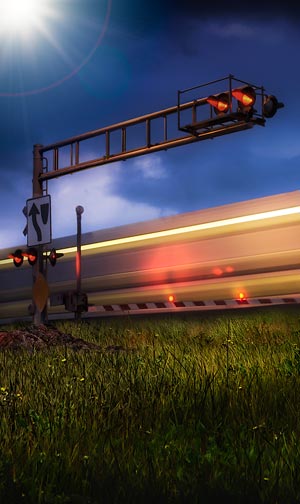Union Pacific Attempts to Correct Erroneous Statements about Deadly Bridge Collapse
(Northbrook, Illinois – July 18, 2012)
The aftermath of a July 4 Union Pacific Railroad coal train accident that derailed 31 loaded rail cars of a 138-car train at the railroad overpass of Shermer Road in Northbrook, IL continues to plague railroad officials as they seek to explain what caused the tragedy.
Burton Lindner, 69, a prominent Chicago attorney and his wife, Zorine, 70, a retired high school guidance counselor, were crushed to death by the deluge of railroad tracks, bridge material, rail cars and coal, and were not discovered until nearly 24 hours after the derailment.
The couple’s children filed suit against the Union Pacific the following day, alleging that the railroad was negligent and failed to ensure the safety of its trains and track, and attorney Robert A. Clifford sought and secured a court order to halt work by railroad crews at the site; fearing key evidence could be removed, lost, or destroyed.
Then, Clifford asked that the National Transportation Safety Board to join and lead the investigation currently underway by the Federal Railroad Administration and the railroad, jointly, saying that the NTSB has more investigative resources than the FRA and that it is more appropriate for an independent governmental agency to investigate than for the railroad to do so. The railroad is “obviously biased and has already demonstrated a lack of transparency in the derailment facts that have been released to the public,” charged Clifford.
Earlier this week, it was revealed that an unidentified Union Pacific employee had reported something that appeared to be abnormal about the UPRR track crossing the overpass.
“We had someone who maintained the signal system that had noticed something casually that didn’t look exactly right on the track,” said UPRR Spokesman Joseph Bateman. “He called the expert in to have a second look to see if it was safe to operate, but by the time the expert came to take a look, the accident had occurred.”
The bridge has a clouded history, having twice been rebuilt or repaired and closing traffic on Shermer Avenue for months each time.
This past Monday, UP vice president of engineering David Connell spoke to a forum of some 200 Glenview and Northbrook (the two Illinois communities near the site of the tragedy) residents to attempt to clarify the rumors and facts regarding the confusion over the accident and its ensuing investigation. With regard to the “heat anomaly” issue that experts have been leaning toward as the cause, Connell explained “Many of these issues you cannot detect because they actually grow and happen underneath the train. It was an extremely hot day in Chicago.” Additionally he stated “The train travels over this (the heat kink), it heats the rail and it continues to push the rail down the track to a certain extent. It is not uncommon to see these two, three and four feet out of line” adding that the UP carries out full inspections of the route four times a year.
As for the tragedy, Connell concluded “We can’t change what happened, (but) we can learn from it.”
Finally, on Wednesday, UP Public Relations Director Mark Davis, speaking from Omaha, NE, addressed several members of the news media in an attempt to correct what the railroad said or what it was reported that the railroad said.
It was reported that UP had said that the tracks near the bridge were being inspected twice a day during extreme temperatures, but Davis said that was a mistake, and that the inspections were only conducted twice a week.
Davis also offered a correction of an earlier railroad statement that the tracks had been inspected hours before the fatal derailment, saying that the inspection would have been scheduled for later in the day.
So what the railroad says at any time should be taken with a grain of salt, because the facts can always be said to be fallacy. Wonder how that will stand up in court?


